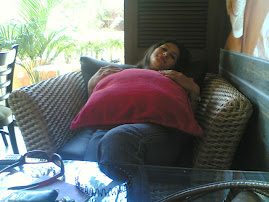
Very professional and seriously in love with dancing. Great place to meet fun
people. And this is hands on experience talking; I joined the institute in June this
year and couldn't have asked for more. Go on, spend your weekends learning, bonding and having a blast!
Check out the community: - http://www.orkut.com/Community.aspx?cmm=10759543
Rocky Poonawala
Bhandarkar road
Near Fergusson College, Deccan
Pune
Wednesday, October 17, 2007
Rocky Poonawala's
Posted by
shivani
at
4:12 AM
![]()
Thursday, October 11, 2007
Salsa tip of the day
* Do Salsa with someone you love. Join classes together. If you have learnt some, spend an evening teaching him/her :-)
Tip of the day: Use the lower half of your body. Shift your weight from one foot to another in steps like basic, back basic, and the walk. This brings grace and seduction in the simplest of steps.
Posted by
shivani
at
11:16 PM
2
comments
![]()
The most important ingredient of Salsa?

Is it chemistry?
Is it technique?
Is it the expressions/moves?
Well, chemistry wins hands down according to most of the salsa fans who say that it is chemistry between partners which makes the dance a sizzling rage! Even the 'basic'- the term for the first step learned in the dance all over the world, if done with the right kinda attitude of passion, sexiness and oomph can look really, really hot!
Posted by
shivani
at
10:15 PM
3
comments
![]()
Thursday, August 30, 2007
Salsa History
It is not only Cuban; nevertheless we must give credit to Cuba for the origin and ancestry of creation. It is here where Contra-Danze (Country Dance) of England/France, later called Danzón, which was brought by the French who fled from Haiti, begins to mix itself with Rhumbas of African origin (Guaguanco, Colombia, Yambú). Add Són of the Cuban people, which was a mixture of the Spanish troubadour (sonero) and the African drumbeats and flavora and a partner dance flowered to the beat of the clave.
This syncretism also occurred in smaller degrees and with variations in other countries like the Dominican Republic, Colombia, Puerto Rico, among others. Bands of these countries took their music to Mexico City in the era of the famous films of that country (Perez Prado, most famous...). Shortly after, a similar movement to New York occurred. In these two cities, more promotion and syncretism occurred and more commercial music was generated because there was more investment. New York created the term "Salsa", but it did not create the dance. The term became popular as nickname to refer to a variety of different music, from several countries of Hispanic influence: Rhumba, Són Montuno, Guaracha, Mambo, Cha cha cha, Danzón, Són, Guguanco, Cubop, Guajira, Charanga, Cumbia, Plena, Bomba, Festejo, Merengue, among others. Many of these have maintained their individuality and many were mixed creating "Salsa".
Posted by
shivani
at
3:23 AM
2
comments
![]()

.jpg)

